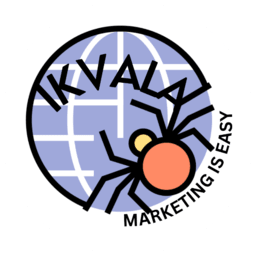You can think of SaaS marketing as the art of ensuring that your SaaS product is relevant and able to meet the needs of your target customers in such a way that prospects want to know more about your product, try it out, and eventually. Subscribe to it, compared to the multitude of competitors.
Here are 5 tips that will help you in your SaaS marketing plan:
- Define your key objectives for the next 12 months
This is the essential step: define 3 to 5 key macro goals that you want to achieve. Don’t hesitate to be ambitious while remaining realistic, and make sure they are in line with your overall business goals.
- Define your kpis
Once you have defined your goals, you can set up KPIs to monitor each month. It is important to properly align marketing and sales KPIs, for example tracking number of Marketing Qualified Leads, number of Sales Qualified Leads and Monthly Recurring Revenue.
We suggest that you monitor a maximum of 3 KPIs per key objective. The risk is always to want to follow too many KPIs and to lack focus. SaaS marketing refers to the unique set of activities, tactics and strategies implemented to position and sell subscription products to new customers.
- Audit your acquisition channels

It’s important to keep track of your prospects and where they’re coming from. The aim is to analyze over the past few months what has and has not worked and how much it has cost. This will allow you to prioritize and choose which acquisition channels to focus on.
Let’s take a simple example: you acquire 80 leads per month through inbound to your site. Among these 80 prospects, 10 are MQLs, that is, prospects that match your buying persona. If you spend 2 days a month optimizing your SEO, your acquisition cost will be equal to your time (2 days x 8 hours x € 30 / hour = € 480) divided by the number of MQLs (10), so your cost acquisition will be 48 €.
- Build your global action plan
Once you have defined your objectives, your KPIs and prioritized your acquisition channels, the next step is to sequence them into large projects in an action plan with a manager and a schedule. Be creative and consistent when building your overall plan.
Taking our previous example on the England launch, an action plan could be sequenced as follows:
- Update your website
- Produce dedicated content that can be used during events
- Write a press release
- Organize a launch cocktail with your existing customers, prospects and potential partners
- Initiate lead generation campaigns
It works well to organize a brainstorming session in order to involve the people concerned (sales team, product team …). Do not be afraid to prioritize your priorities and refuse any project that does not have an impact on your goals!
- Formalize your content marketing plan
Depending on the channels you chose in step three and your goals, you can now dive into the marketing content production plan. For each type of content (blog post, white paper, webinar, etc.), you can recap all the content you need to produce, who’s in charge, and a reverse schedule with KPIs to track like number of downloads for a white paper, the number of unique visitors to a blog post as well as the cost of production.
For SEO, you can define the expected volume of traffic each month, but you can also track your positioning on specific keywords. For events, you should focus on the events you want to attend, intervene or have a booth. All of these detailed plans should obviously be linked to your initial overall plan.



